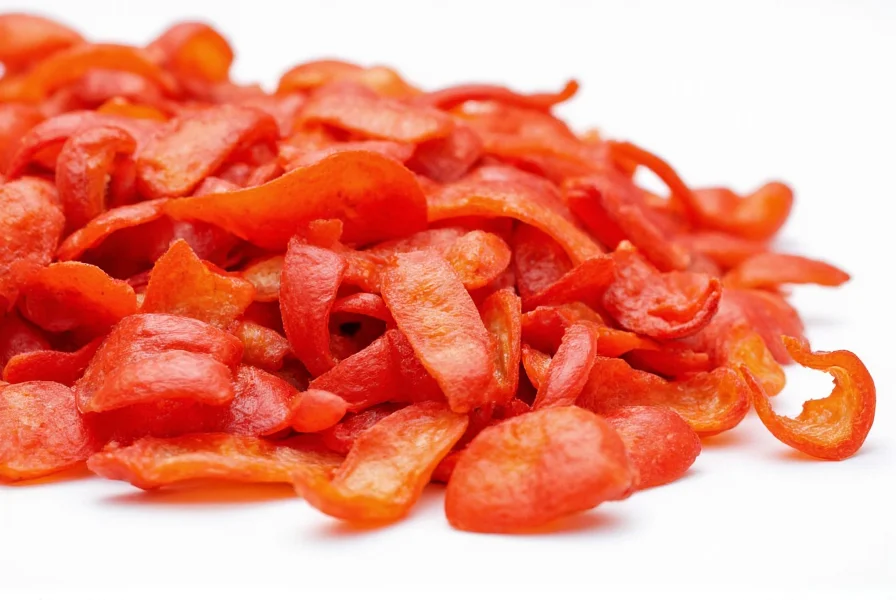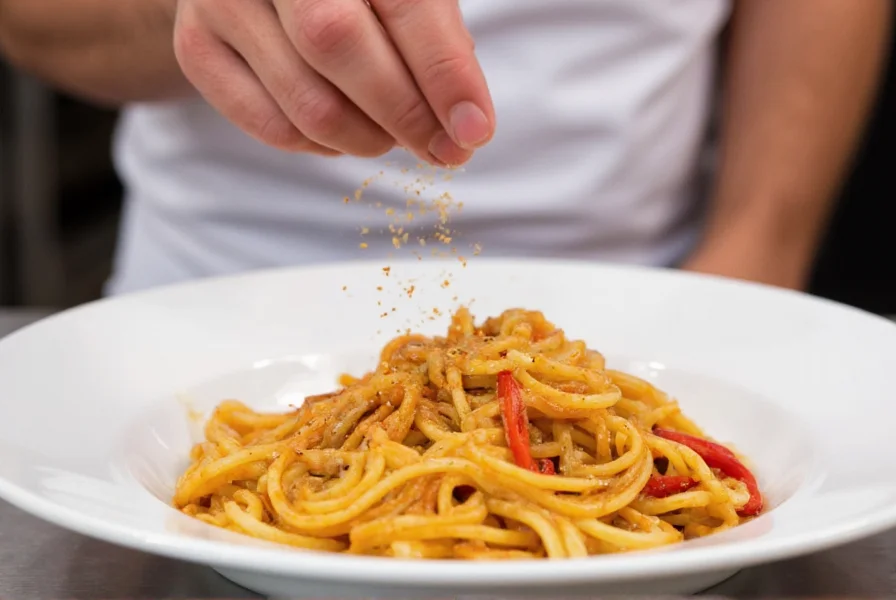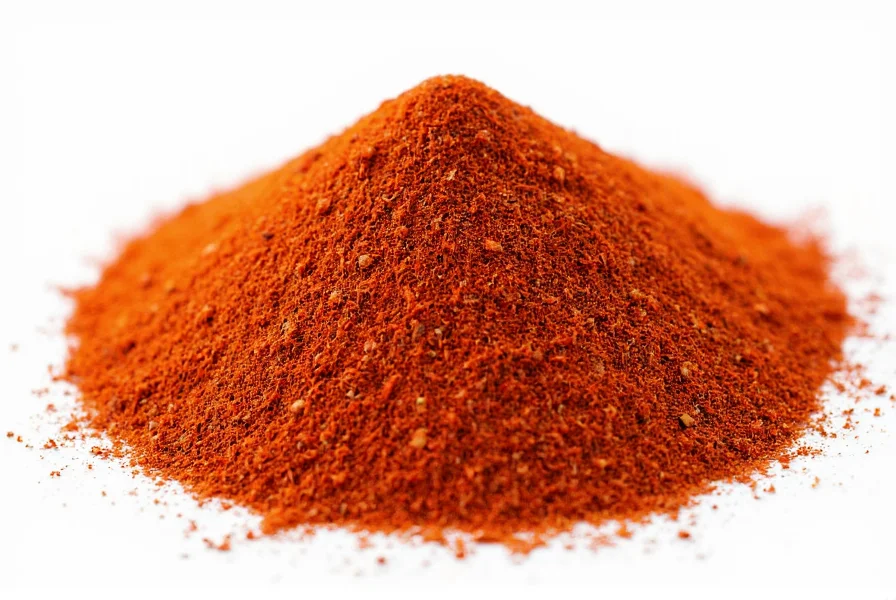Understanding what red pepper flakes are begins with recognizing them as a fundamental spice in many global cuisines. These vibrant red fragments deliver immediate heat and complexity to sauces, pizzas, pastas, and marinades. Unlike pure cayenne powder, red pepper flakes contain both the seeds (hottest part) and the fruit flesh, creating a more nuanced heat profile that builds gradually rather than hitting all at once.
Composition and Origin of Red Pepper Flakes
Red pepper flakes primarily come from various cultivars of Capsicum annuum, including cayenne, serrano, and Fresno peppers. The specific blend varies by region and producer, which explains why heat levels can differ between brands. Commercial red pepper flakes typically combine multiple pepper varieties to achieve a consistent flavor profile.
During production, ripe red peppers are harvested, dried until brittle, then crushed into small flakes. This process preserves the capsaicin (the compound responsible for heat) while concentrating the natural flavors. The resulting product contains both the spicy seeds and the flavorful fruit, unlike single-ingredient cayenne powder which uses only ground seeds.

Heat Level and Flavor Profile
On the Scoville scale, red pepper flakes typically range from 30,000 to 50,000 units, placing them in the medium-hot category. This makes them significantly milder than pure cayenne powder (30,000-50,000 Scoville units) but hotter than paprika (500-1,000 units).
| Spice Type | Scoville Heat Units | Flavor Characteristics |
|---|---|---|
| Red Pepper Flakes | 30,000-50,000 | Balanced heat with smoky, slightly sweet notes |
| Cayenne Powder | 30,000-50,000 | Immediate, intense heat with less complexity |
| Paprika | 500-1,000 | Sweet, earthy with minimal heat |
The dual-component nature of red pepper flakes—containing both seeds and flesh—creates what chefs call "building heat." This means the spiciness develops gradually as you eat, rather than delivering an immediate burn. The small bits of pepper skin also contribute subtle smoky and slightly sweet notes that pure powdered spices lack.
Culinary Applications and Proper Usage
Knowing what red pepper flakes are made of helps understand their optimal usage. Unlike powdered spices that distribute evenly, the flakes provide intermittent bursts of heat as they're encountered in the dish. This characteristic makes them particularly valuable in:
- Italian cooking: Sprinkled on pizza, pasta dishes, and in tomato sauces
- Mediterranean cuisine: Added to olive oil for dipping bread or finishing dishes
- Asian fusion: Used in stir-fries and noodle dishes for controlled heat
- Marinades: Infused in oils to gradually release flavor
For best results when cooking with red pepper flakes, add them early in the cooking process to mellow their raw heat, or sprinkle them at the end for a brighter, more pronounced kick. When substituting in recipes, remember that 1/2 teaspoon of red pepper flakes generally equals 1/8 teaspoon of cayenne powder due to concentration differences.

Storage and Shelf Life Considerations
Proper storage maintains the quality of red pepper flakes. Store them in an airtight container away from light and heat to preserve their vibrant color and potency. When stored correctly, they maintain optimal flavor for 1-2 years, though they remain safe indefinitely (with gradually diminishing potency).
Signs that red pepper flakes have degraded include fading color (from bright red to dull brown), loss of aroma, and diminished heat. Unlike many spices that simply lose potency, degraded red pepper flakes can develop slightly bitter notes that negatively impact dishes.
Common Misconceptions Clarified
Several misunderstandings surround what red pepper flakes are and aren't:
- They're not the same as crushed red pepper: While often used interchangeably, "crushed red pepper" may contain additional ingredients like salt or anti-caking agents
- They're not pure cayenne: Most commercial blends contain multiple pepper varieties
- They're not just for Italian food: Used globally from Korean gochugaru to Chinese la jiao
- The seeds aren't the only hot part: While seeds contain concentrated capsaicin, the placenta (white membrane) is actually hottest
Substitutes and Alternatives
When you're wondering what to use instead of red pepper flakes, consider these alternatives based on your specific needs:
- For similar texture: Crushed Aleppo pepper (milder, fruitier) or gochugaru (Korean red pepper flakes)
- For similar heat level: 1/2 teaspoon red pepper flakes = 1/8 teaspoon cayenne powder + 1/4 teaspoon paprika
- For milder option: Sweet paprika with a pinch of cayenne
- For immediate heat: Cayenne powder (use sparingly)
Understanding what red pepper flakes are made from helps select appropriate substitutes that match both the heat level and textural component they provide in recipes.
Frequently Asked Questions
What are red pepper flakes made of exactly?
Red pepper flakes consist of dried and crushed cayenne or similar hot chili peppers, including both the seeds and fruit flesh. Commercial blends often combine multiple pepper varieties to achieve consistent flavor and heat. Unlike pure cayenne powder which uses only seeds, red pepper flakes contain the entire pepper, creating a more complex flavor profile with building heat rather than immediate burn.
How do red pepper flakes differ from crushed red pepper?
While often used interchangeably, red pepper flakes typically refer to pure crushed chili peppers, whereas "crushed red pepper" may contain additional ingredients like salt, anti-caking agents, or other spices. True red pepper flakes should list only "chili peppers" or "red pepper" as the ingredient. The texture also differs slightly, with red pepper flakes being more uniform in size compared to some crushed red pepper products.
Can I make my own red pepper flakes at home?
Yes, you can make homemade red pepper flakes by drying ripe red chili peppers (cayenne, serrano, or Fresno work well) until completely brittle, then crushing them using a food processor, mortar and pestle, or by hand. For best results, remove stems but keep seeds and membranes intact. Spread the crushed peppers on a baking sheet and dry in a low oven (175°F/80°C) for 2-4 hours until completely dry. Store in an airtight container away from light.
Are red pepper flakes healthy?
Red pepper flakes contain capsaicin, which has been studied for potential health benefits including metabolism boost, pain relief, and anti-inflammatory properties. They're low in calories and provide vitamin C and antioxidants. However, they should be consumed in moderation as excessive amounts can irritate the digestive system. The health benefits are most pronounced when used as part of a balanced diet rather than consumed in large quantities.











 浙公网安备
33010002000092号
浙公网安备
33010002000092号 浙B2-20120091-4
浙B2-20120091-4